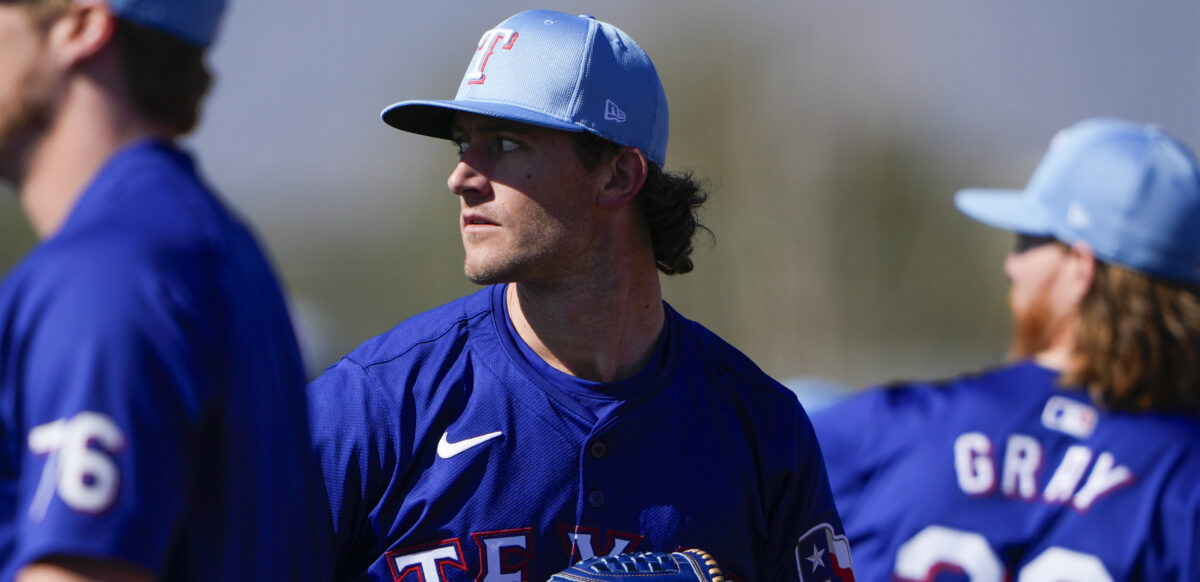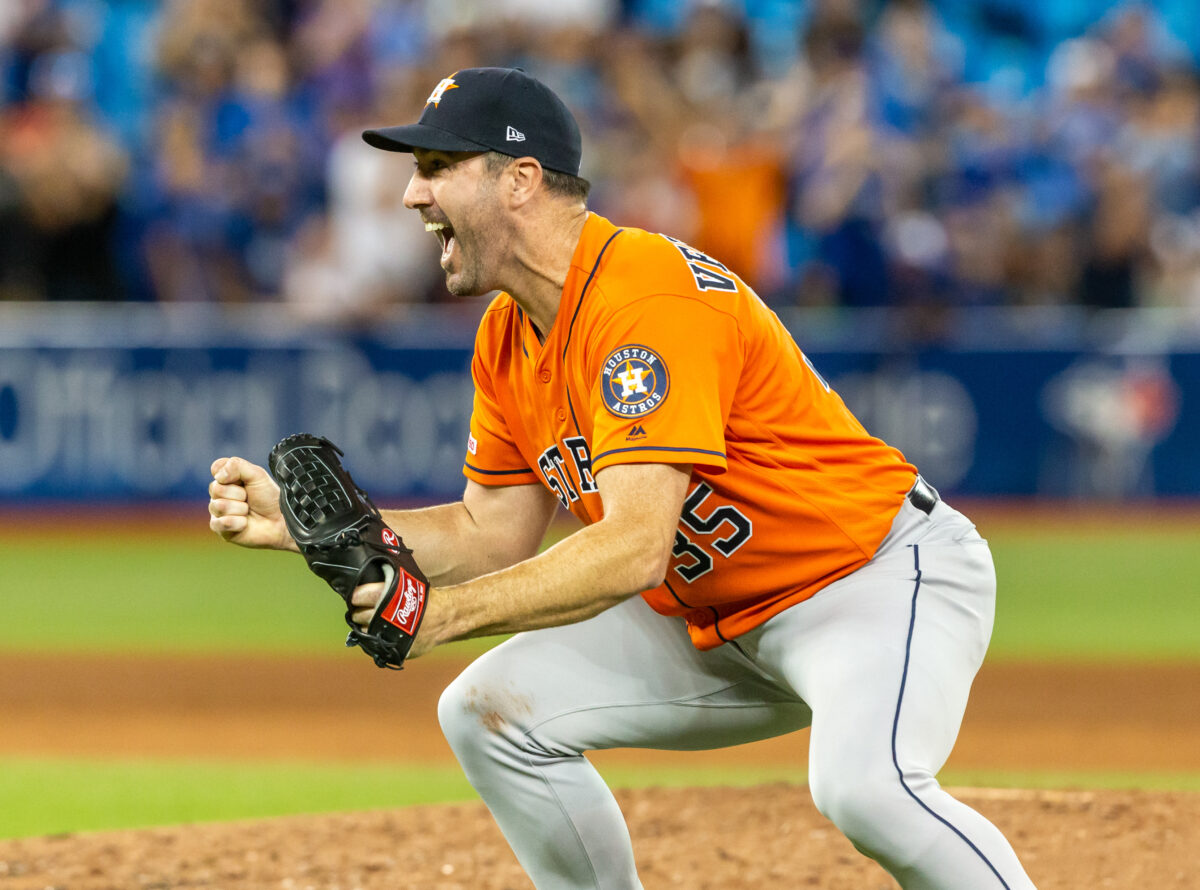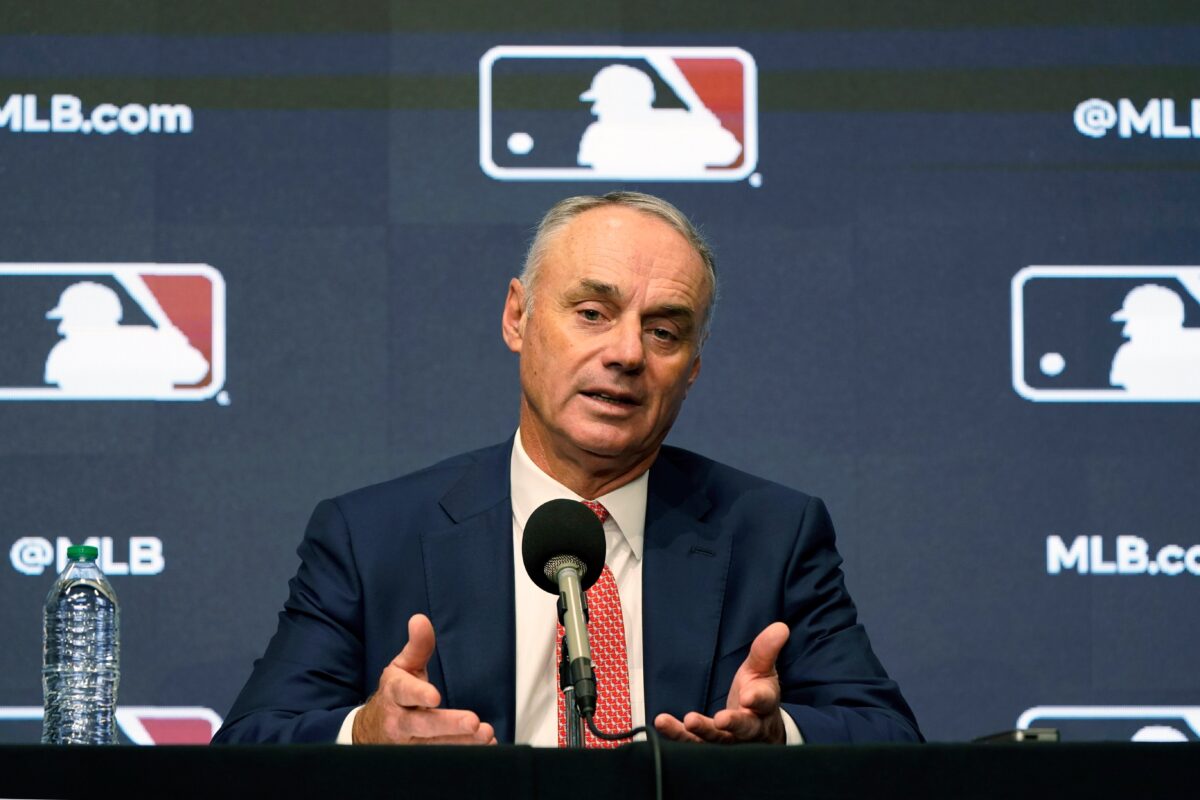Will the investment bank that analyzed MLB team values please stand up?
Since taking over the office of the commissioner of Major League Baseball, Rob Manfred, an allegedly smart person with degrees from Harvard and Cornell, has made a penchant of saying some incredibly stupid things.
There was the time he called the World Series trophy a “piece of metal” following the largest cheating scandal the sport has seen in a century—a scandal he refused to punish any players for partaking in, no less.
That was quickly followed by Manfred attempting to use the COVID-19 shutdown to strong-arm players into an absurd reworking of baseball’s economic structure, resulting in him unilaterally imposing a 60-game shortened season after failing to reach a deal.
Most recently, Manfred initiated a lockout of the MLBPA as a negotiating tactic that he claimed would only help speed up the completion of a new collective bargaining agreement—then he waited 43 days before even getting back to the table.
But his comments on Thursday may be an all-time low—or high, depending on your view—of Manfred’s tenure.
Speaking to reporters in an attempt to bolster MLB owners’ cries of economic hardship, Manfred claimed the league hired an investment banker who showed that running a Major League Baseball team just isn’t profitable.
“We actually hired an investment banker, a really good one, actually, to look at that very issue,” Manfred said. “If you look at a purchase price of franchises, the cash that’s put in during the period of ownership, and then what they sold for, historically, the return on those investments is below what you get in the stock market, which looks like the end of the stock market was a lot more risky.”
You’d think a massive study showing a critical public misunderstanding of baseball’s core economic structure is something MLB owners would want to spread far and wide. If this were actually the case, Manfred would be doing a disservice to the owners he works for by keeping it in his back pocket. A fireable offense if there ever was one.
Except Manfred and MLB won’t say anything else about the study. Not what framework was used to determine team values, not what data the analysts had access to and certainly not which bank was responsible for compiling the report.
Per The Athletic’s Evan Drellich (emphasis by FTW):
“A Major League Baseball spokesperson declined to identify the investment bank that produced the study, or other details about the study. The answer Manfred gave was indirect, in that it answered a question of how teams fared relative to the stock market, when the question posed had nothing to do with the stock market but was simply: Are teams good investments? And an attempt to temper the quality of investment in baseball team runs counter to public studies and reporting.
“Pitchbook said that since 2002, all four of the major U.S. sports leagues have performed better than the S&P 500 companies on the stock market. The return on MLB franchises was 669 percent, above the NFL’s 558 percent and exceeded only by the NBA’s 1,057 percent.”
This is, objectively, quite sketchy! And, objectively, quite easy to debunk.
Forbes senior contributor Maury Brown dug into Manfred’s comments even further, and the more you pick them apart the less sense they seem to make:
“The comments would make the likes of Steven Cohen – one of the biggest hedge fund moguls in the world – look like a poor investor. If Manfred is saying he could have invested his money more wisely, and with less risk, why would he do so? There are other investment factors beyond just the purchase and sale. In 2019, just before the pandemic struck, the annual Forbes valuations of the 30 clubs noted how incredibly lucrative owning an MLB franchise is.”
You don’t even have to be an investment banker to see that the price of MLB teams has gone up exponentially over the years.
Before Cohen bought the Mets for $2.48 billion, the Kansas City Royals—one of the smaller market teams in the league—sold for $1 billion only 20 years after previous owner David Glass purchased his controlling stake for $96 million.
Jeffrey Loria bought the Miami Marlins in 2002 for $158.5 million and sold them for $1.2 billion in 2017. The club’s Opening Day payroll during Loria’s stewardship exceed $60 million on just five occasions.
As far as the idea investing in the stock market would’ve been a better choice for the league’s billionaires, well, ESPN’s Jeff Passan took a Mjolnir-like hammer to that notion:
“Never mind the fact that 30 men chose to own baseball teams rather than investing that money in the stock market. It’s better to focus on the hard facts that are publicly available and show that owning at least one team, the Atlanta Braves, is quite an excellent investment.
“The Braves are owned by Liberty Media, a publicly traded company, and their financials are laid bare in public statements. The most recent statement covers the third quarter of 2021, from July through September, before the Braves won the World Series. In that quarter alone, the team’s operating income before depreciation and amortization (OIBDA) was $55 million, according to Liberty. Hefty returns aren’t anything new. The team’s OIBDA in 2018 was $88 million and in 2019 $49 million before losing $53 million during the COVID-shortened 2020 season. And that’s leaving out entirely the tax benefits organizations reap through depreciation and amortization.”
So we’re left with this: Either Rob Manfred is lying through his teeth in a weak attempt to make players look responsible for the league’s owners deciding to lock out the MLBPA, or Major League Baseball hired the worst investment banker alive to analyze financial data the league typically goes to great lengths to hide.
If it’s the latter, we would absolutely love to hear from you and are genuinely curious how you came to such a conclusion.
Until then, it’s impossible to do anything but laugh at Manfred using labor scare tactics any high schooler could refute with a quick Google search.
[mm-video type=video id=01fvmsgd0kb9rcmpygyt playlist_id=none player_id=none image=https://images2.minutemediacdn.com/image/upload/video/thumbnail/mmplus/01fvmsgd0kb9rcmpygyt/01fvmsgd0kb9rcmpygyt-38e6c66d2c087c4f825a2b816a087940.jpg]
[listicle id=1843696]





